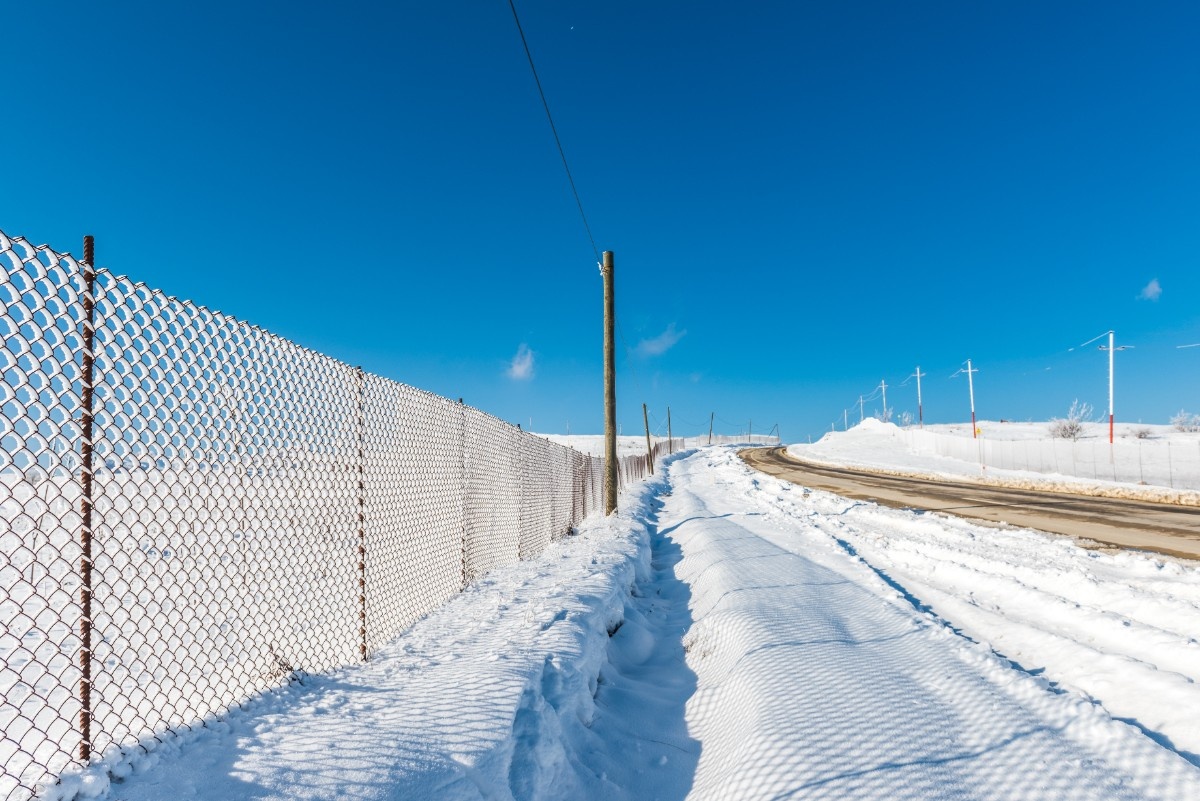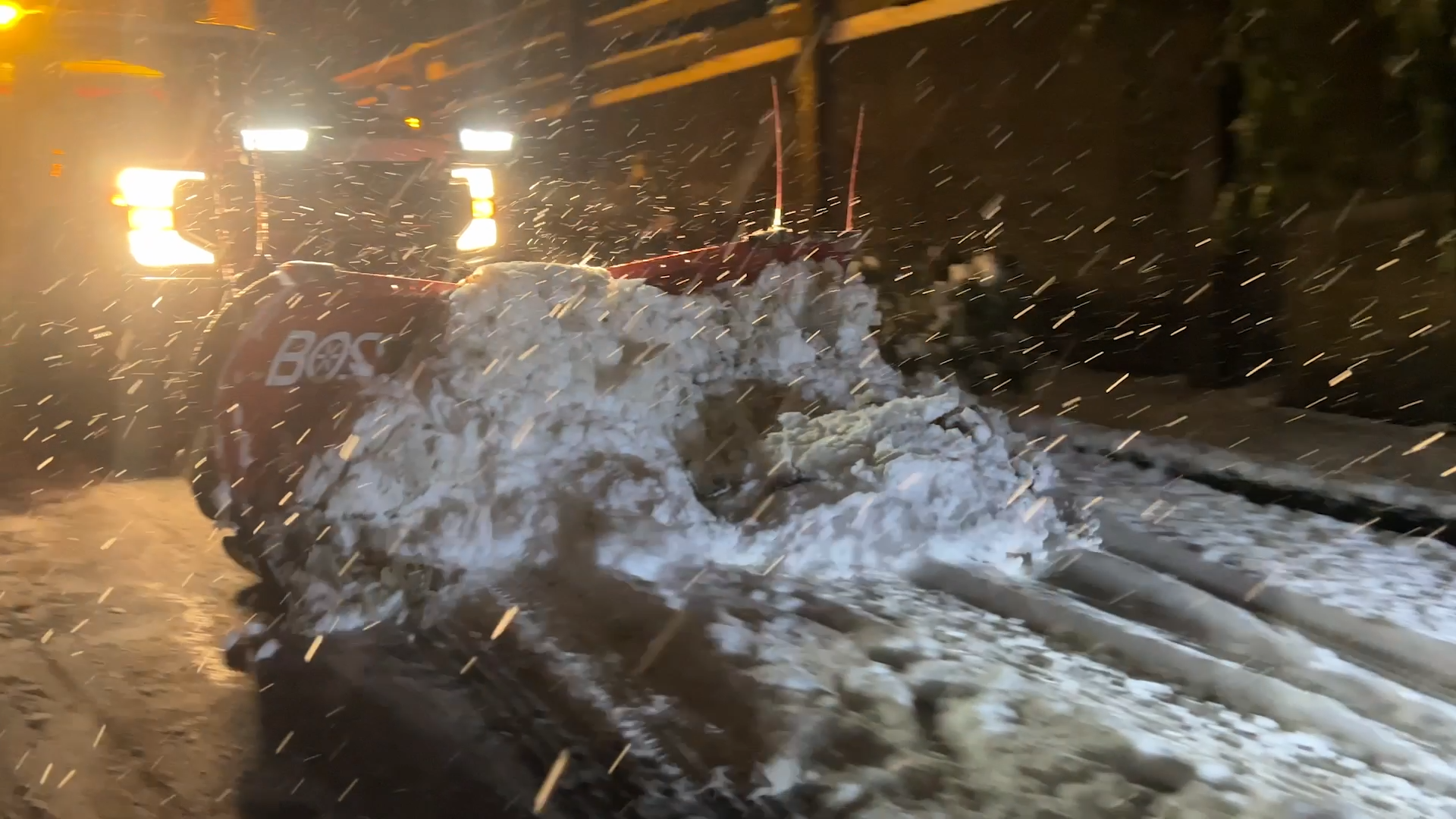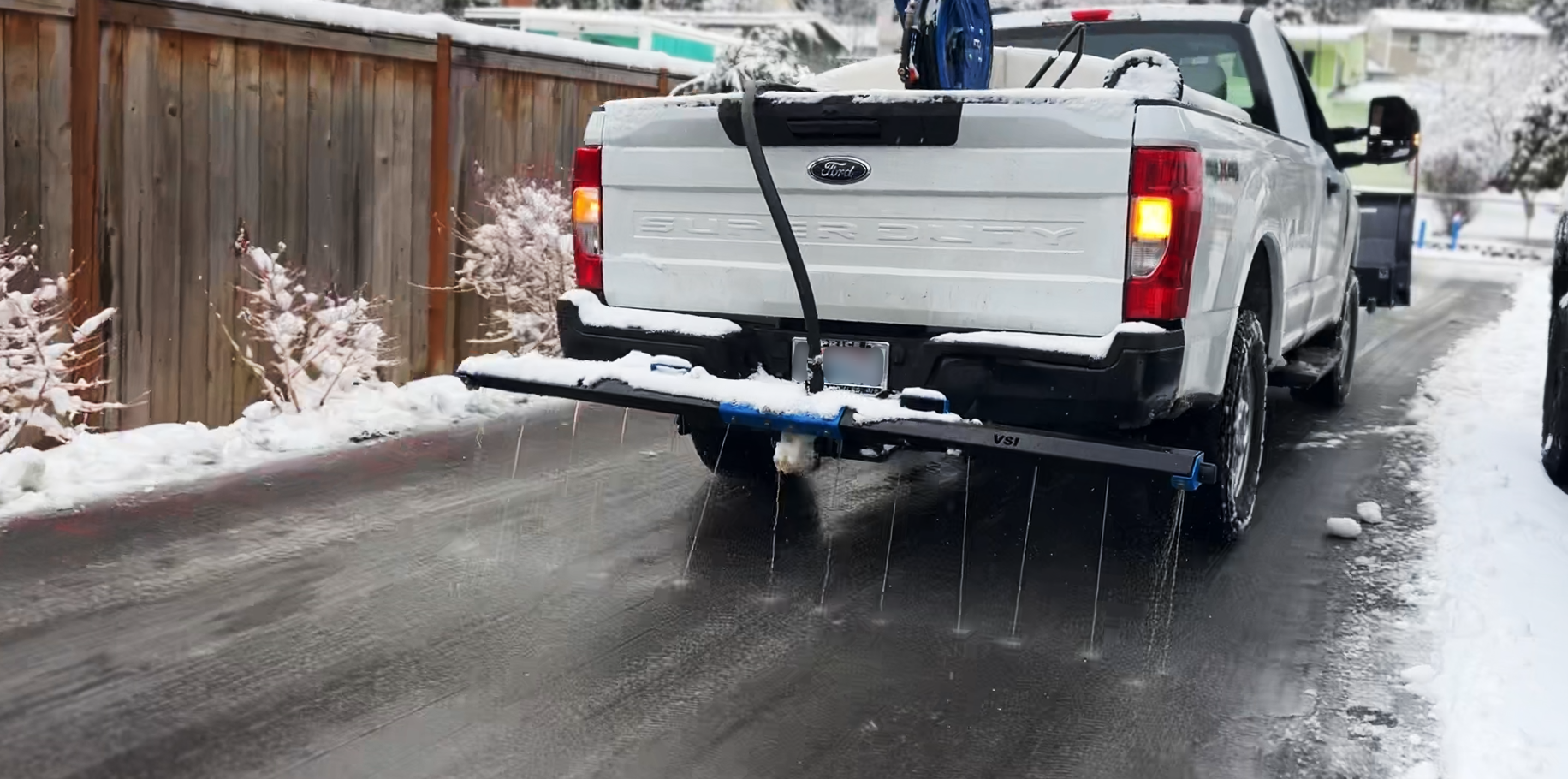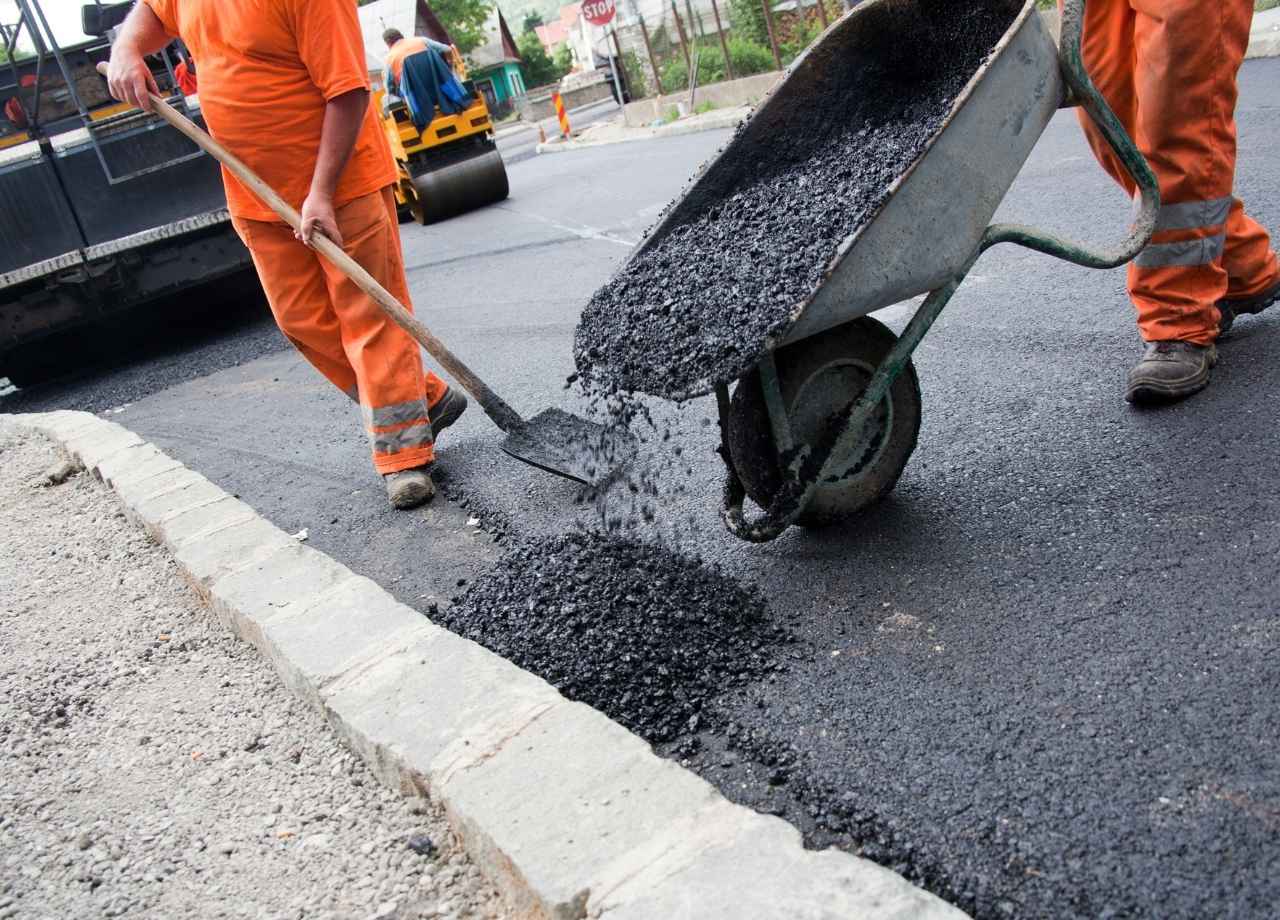How Snow Fences Help Protect Your Commercial Property
Winter storms don’t just bring cold temperatures; they create serious logistical challenges for businesses. Snowdrifts block access points, make parking lots hazardous, and increase maintenance costs. Many commercial property owners rely on plows and de-icing chemicals, but these reactive measures aren’t always enough. Snow fences offer a proactive solution by controlling where snow accumulates, preventing many of the issues that arise after a heavy snowfall.
Facility managers who depend solely on plowing and salting often deal with unpredictable snow accumulation, frequent service calls, and rising maintenance costs. A well-placed snow fence significantly reduces these issues, making winter operations more manageable and cost-effective.
The Problem with Uncontrolled Snow Drifts
Strong winds pick up loose snow and carry it across open spaces. When that snow finally meets an obstacle, such as a building, fence, or parked car, it settles and forms drifts. Unlike freshly fallen snow, these windblown piles are unpredictable, often burying driveways, sidewalks, and loading zones while leaving other areas relatively clear.
Commercial properties face several challenges due to snow accumulation:
- Blocked entrances and pathways – Employees and customers struggle to navigate walkways and parking lots, increasing the risk of slips and falls.
- Increased snow removal costs – Plows must return repeatedly to clear drifts that keep forming, driving up operational expenses.
- Hazardous parking areas – Vehicles get stuck in deep snow, creating delays for both staff and visitors.
- Damage to landscaping and infrastructure – Excess snow piled against buildings can cause water damage when it melts and refreezes, leading to cracks and erosion.
A well-placed snow fence reduces these problems by controlling where the snow settles. Instead of allowing the wind to deposit drifts in high-traffic areas, the fence forces the snow to accumulate in designated zones, keeping key parts of the property clear.
How Snow Fences Work
The concept behind snow fencing is straightforward. Instead of acting as a barrier to stop snow, these fences disrupt the wind’s movement, causing it to slow down. As wind speed decreases, the snow it carries is forced to drop, accumulating on the downwind side of the fence rather than continuing toward roads, sidewalks, or entrances.
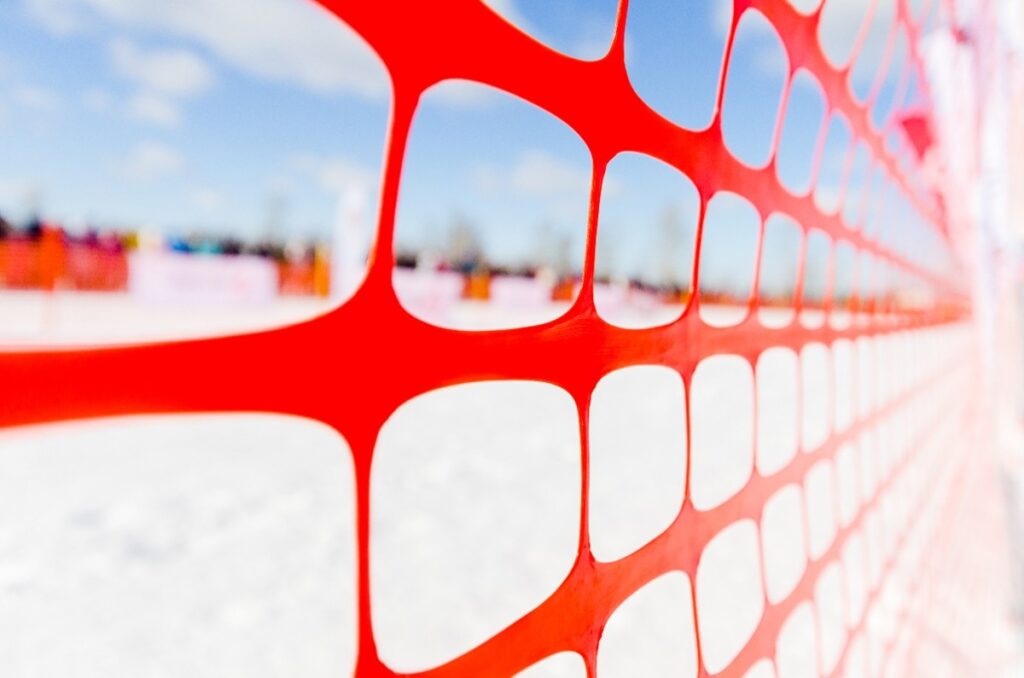
The effectiveness of a snow fence depends on several factors:
- Placement – Installing the fence at the right distance from the area it’s protecting is crucial. Too close, and snow may still reach the intended area. Too far, and drifts may form in unintended spots. The ideal distance varies based on wind speed and snowfall levels.
- Height – A taller fence captures more snow, making it suitable for regions with heavy winter storms. Most commercial snow fences are at least four feet tall, but taller options provide better coverage.
- Material – Traditional wooden slat fences, plastic mesh barriers, and even rows of trees (known as living snow fences) all serve the same purpose. Each material has advantages, with plastic being more flexible and wooden options offering durability.
Snow fences are not one-size-fits-all solutions. Businesses must evaluate their specific needs, considering wind direction, property layout, and the most problematic areas for snow accumulation.
The Financial and Operational Benefits of Snow Fences
Every winter, businesses spend thousands of dollars on plowing, salting, and de-icing services. While these efforts help, they don’t address the root cause of drifting snow. Snow fences significantly reduce the amount of snow that reaches high-traffic areas, cutting down on the frequency of plowing and other reactive measures.
Cost Savings
Regular snow removal services add up quickly, especially during seasons with frequent storms. Each visit from a plow or salting crew costs money, and when drifts reform within hours, the expenses multiply. A properly installed snow fence minimizes this cycle, leading to:
- Fewer plowing sessions – Less snow in critical areas means fewer trips from snow removal crews.
- Lower de-icing costs – Salt and chemical de-icers become less necessary when snow drifts are controlled.
- Reduced wear and tear on pavement – Repeated plowing and de-icing take a toll on asphalt and concrete. Keeping snow from piling up in certain areas helps preserve surfaces longer.
Improved Accessibility
When employees and customers can access a building without wading through deep snow or navigating icy walkways, business operations run more smoothly. Delivery drivers reach loading docks on time, parking spaces remain available, and foot traffic continues without unnecessary disruptions.
For industries that rely on tight schedules—such as logistics, retail, and healthcare—reliable access during winter storms is critical. A snow fence helps maintain that access without relying entirely on reactive snow removal.
Increased Safety and Liability Protection
Slippery conditions create risks. If a customer or employee falls in a snow-covered lot, businesses may be held liable for injuries. Snow fences contribute to safer conditions by keeping snow from accumulating in high-traffic areas, reducing the risk of ice patches forming in frequently used spots.
Reduced Property Damage
Piles of snow pushed against a building can lead to problems once temperatures rise. Melted snow seeps into cracks, refreezing overnight and expanding, which weakens pavement and concrete. Parking lot surfaces, curbs, and even exterior walls suffer long-term damage. Preventing excessive snow buildup near buildings helps avoid these costly repairs.
Choosing and Installing the Right Snow Fence
Selecting the best snow fence for a commercial property involves understanding the site’s specific snow movement patterns. Before installation, a few key factors must be considered:
- Wind direction – Knowing where the prevailing winds come from helps determine where a fence should be placed.
- Snow storage areas – The snow must be redirected to a location where it won’t interfere with daily operations.
- Fence material and durability – Some businesses prefer the flexibility of plastic mesh, while others choose wooden slats for a sturdier, longer-lasting option.
Installation Best Practices
- Snow fences must be placed at an appropriate distance from the area they’re protecting. This distance varies but typically falls within 35 to 50 feet upwind of the targeted space.
- If installed too close, drifts may still reach driveways and entrances. If positioned too far away, wind may carry snow beyond the intended containment zone.
- Fences should be secured properly to withstand strong winter winds. Posts must be deep enough to remain stable, especially in areas with high snow loads.
- Regular inspections ensure the fence remains in good condition throughout the winter season.
Long-Term Benefits and Considerations
Snow fencing is a long-term investment that continues to deliver results year after year. Unlike plowing and de-icing, which require ongoing expenses, a one-time installation provides consistent protection with minimal upkeep.
Regular maintenance extends the lifespan of the fence. Wooden fences benefit from occasional sealing to prevent weather damage, while plastic options should be checked for tears or weakened areas. After the winter season, storing temporary fences properly ensures they’re ready for use the following year.
A Practical Solution for Snow Management
Businesses that experience frequent snow-related disruptions can benefit greatly from snow fencing. By taking a proactive approach, businesses reduce snow removal costs, improve accessibility, and prevent property damage.
For commercial properties in snow-prone regions, adding a snow fence isn’t just a preventative measure—it’s a strategic investment in smoother operations, improved safety, and long-term cost savings.

